One of the first times Geoff Ortiz surfed the Great Lakes was back in 2007 in Toronto. It was December and cold. Ortiz had learned to surf in Costa Rica seven years earlier and was fully addicted. Once he realized he could surf in his hometown of Toronto, he started watching the weather and heading to Bluffer’s Park on the city’s east side whenever the swell was up.
One morning, as he crossed the road in his wetsuit with his board under his arm, a police officer approached him.
“He goes, ‘what are you doing?’” recalls Ortiz. “I told him I was going surfing. He said, ‘what do you mean you’re going surfing?’ And he just had to clarify. He had to make sure I was sound of mind.”
Since then, Ortiz has surfed Ontario, Huron and Erie whenever possible. One look at his Instagram feed shows that if there are waves, he’s out there. The self-employed contractor regularly drops everything to chase the freshwater swell.
“I’ll drop the kids at school and go straight from there. If I’m going to Lake Erie, my wife will drop the kids off at school a little earlier. On those days, I’ll make lunches for the kids and leave as early as possible to beat traffic,” he says of the two-hour drive.
Four years ago, Ortiz stopped taking his surfboards with him and began standup paddleboarding instead.
“I realized I’d be able to catch more waves and spend more time on the water with a SUP. But early on, I wasn’t catching many waves at all. It was quite difficult,” he recalls. “I was always dealing with chop and falling a lot. But I was stubborn. Once I got the hang of it, I got more waves and the rides tended to be a lot longer than on a surfboard.”
Despite the sub-zero temperatures, winter is a great time to surf the Great Lakes. At any given wind speed, waves build higher in cold weather because cold air over warm water transfers more wind energy than warm air over cold water.
When the water temperature is close to zero, and the air temperature is below zero, a mild 15-kilometer wind will generate two- to three-foot waves. Lower wind speed makes for cleaner waves too.
But how does Ortiz motivate himself to get in the water when it’s -15°C, before factoring in the windchill?
“I’ve done it enough times now I’ve normalized it,” he says. “For the first while it was harder to motivate myself to get out there. And as a paddleboarder, it can actually be quite cold until you get some water in the suit. Even though I know it’ll be warmer once I get in the water, I still avoid it while up on my board. But once I fall in, I warm right up.”
Now an ambassador for Xcel wetsuits, Ortiz wears a 5/4/3 suit—five-millimeter thick neoprene on the body, four-millimeter on the arms and three-millimeter on the hood—and rubs “wind and weather” cream on his face.
He’s usually the only standup paddleboarder out in the dead of winter, but he’s often not alone. There’s a small but mighty band of Great Lakes surfers who claim as long as the lake isn’t iced-over, it’s never too cold to surf.
“With wetsuit technology, it’s really not crazy at all,” says Ortiz. “I can pull my hand out of my glove and shake hands with somebody and my hand will be warmer than someone walking on the beach. It’s not crazy once you start. The session doesn’t end because I’m cold, it ends because I’m exhausted.”
Tougher than Sub-Zero. Photo: Sandy Nicholson



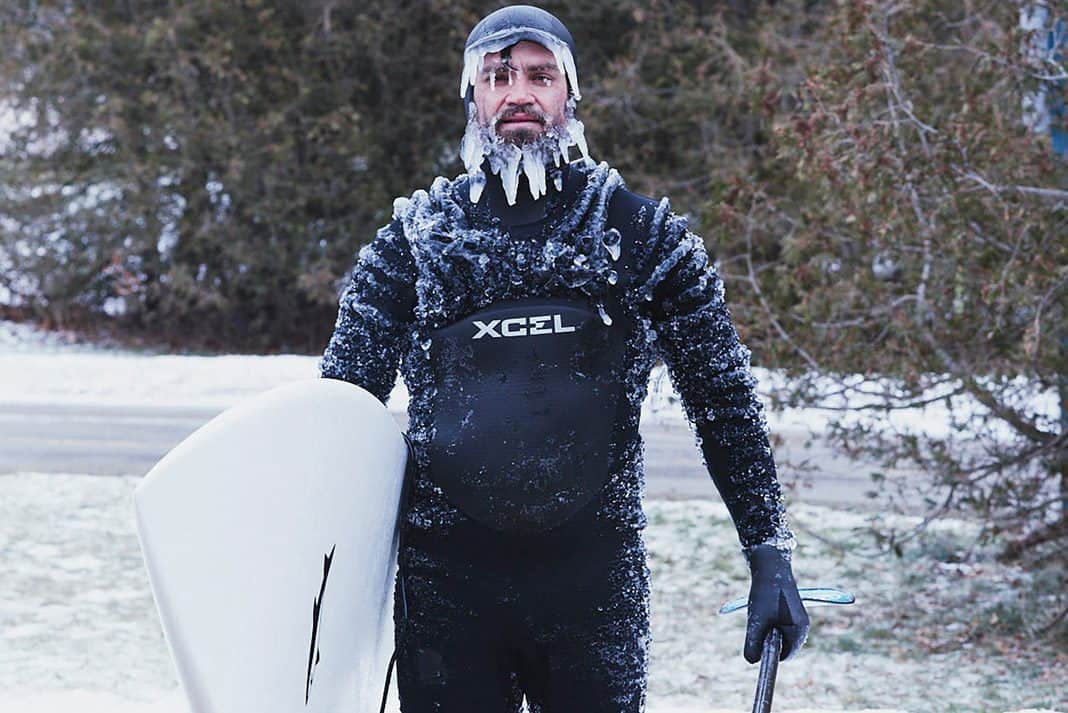
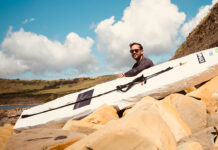
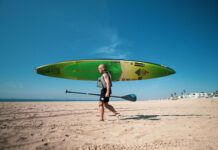
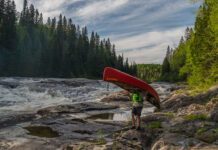

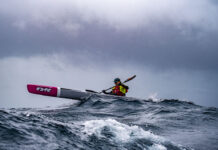

Great Story about Enjoying Cold Water Sports—More Safety Tips
To help readers stay safe in cold water, please share these tips:
1. Know the Water Temperature. If you don’t know, how can you plan the right outfit? Get acquainted with the right gear for the water temp, like when a dry suit is preferred over a wet suit.
2. Dress for the Water Weather. The air may be deceptively warm. Always dress for the temperature of the water, even or especially if you don’t plan on getting wet. The unexpected swim is the most dangerous.
3. Two boards or boats are better. If you one person gets into trouble, the other person can call for help, or lend a hand.
4. Share your float plan. Let people know where you are paddling, and when you’re expected back. If the plan changes, share those new locations and deadlines. The folks on shore may save your life by letting the Coast Guard know something is wrong and where to look.
5. Take the “search” out of Search & Rescue. Carry an EPIRB so that if something goes wrong, you can direct help right to you. In cold water, minutes matter, and it will take the USCG 20 minutes to scramble a helo.
Of course the only PFD that will save your life is the one you’re wearing; that goes without saying, right?
My brother David Dickerson was an expert paddler. He went out on Omena Bay in Northern Michigan about 20 miles north of Traverse City, on an exceptionally warm April day in 2012. Whatever happened that day put him into 41 degree water (Fahrenheit). He wore shorts and a fleece. Everything he needed to survive that accident was hanging in his closet: dry suits, wetsuits. His Chesapeake Bay Retriever came back without him. The coroner figures that he had 15 minutes before hypothermia would have set in. Every spring for several years, the USCG and I have shared his story. I want people to enjoy the water, at every temperature. And do it safely, so you can enjoy it again and again.
How strong of a paddler was he? He regularly paddled the Gales of November on Lake Superior with Stanislav Chladek. He trained paddlers, including how to push the nose of a swamped canoe down to empty it, so one could get back in. He was friends with Darren Bush, and worked at Rutabaga in Madison, WI. Cold water doesn’t care how strong or skilled you are.